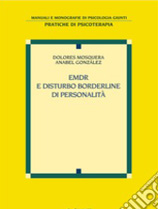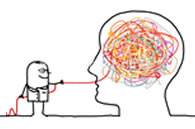EMDR e Disturbo Borderline di Personalità

MOSQUERA DOLORES, GONZALEZ ANNNABEL (2016): EMDR e Disturbo Borderline di Personalità, Giunti, Firenze, pp. 352, Euro 28.00 DOLORES MOSQUERA AND ANNABEL GONZALEZ: BORDERLINE PERSONALITY DISORDERS AND EMDR THERAPY. Ed CREATESPACE.
di Paola Castelli Gattinara
According to the most recent literature, Borderline Personality Disorders is a severe pathology that emerges from the intertwining between biological vulnerability and a history of chronic early neglect and trauma. Anabel Gonzalez and Dolores Mosquera offer in this book a unique contribution to the treatment of patients with Borderline Personality Disorders (BDP) by integrating the EMDR approach within the theory of structural dissociation of personality. The Authors show how the specific impairments of BDP clients can be addressed with tools from EMDR therapy.
In this book, as in their previous book, EMDR and Dissociation: a progressive approach, they expand and modified the EMDR procedures offering a clear and exhaustive view on how to work through every issue that may influence the outcome, like psychological defenses and dissociative phobias.
Through the description of several clinical cases, the book explains how the bilateral stimulation can be used and dosed according to multiple modes and at different times during the therapeutic process, to address a wide variety of clinical conditions, symptoms and somatic problems . EMDR is able to provide answers ductile and flexible in all stages of that Phase-Oriented Therapy internationally recognized as the most effective approach in these clinical conditions.
Many EMDR procedures favor the stabilization of the patient, and strengthening the resources already present . Furthermore, the use of bilateral stimulation not only facilitates the processing of traumatic memories, but increases the patient's ability to take care of themselves, to access, tolerate and process their experiences. The book is divided in 4 sections: in the first section, the authors describe the theoretical foundation of this pathology, in the 2^ and third section they illustrate, phase by phase, the treatment with EMDR. Many of the complex situations that the therapist might encounter during the therapeutic process are examined; among them self-harm and suicide are two aspects that present the greatest relational challenge for a therapist. For this reason, particular attention is given to the therapeutic relationship.
Mosquera and Gonzalez repeatedly underline the importance of monitoring the reaction, witch the therapist might have as a useful tool to understand the relational experiences the client has lived or is still living. The last part of the book, is entirely dedicated to the interpersonal context of the BDP client, focusing on families and couples of individuals who present a borderline disorder. Clients with this pathology tend to be trapped in problematic relationships and managing this dynamics is crucial to the success of the treatment.
The reader will find in this book practical guidelines and clinical vignettes that reflect in a simply, but accurate way the great amount of experiences the two scholars have of the borderline inner world. The two Authors demonstrate the usefulness of the EMDR approach not only in reprocessing traumatic memory, but also to encourage the posttraumatic growth that can lead to a heathier functioning.
Paola Castelli Gattinara









